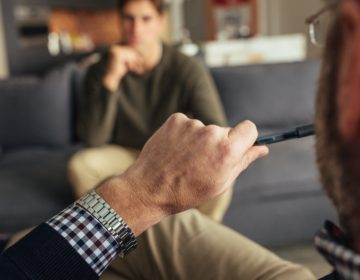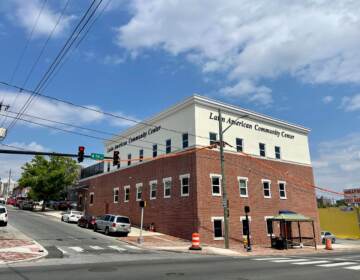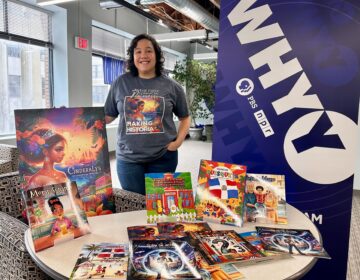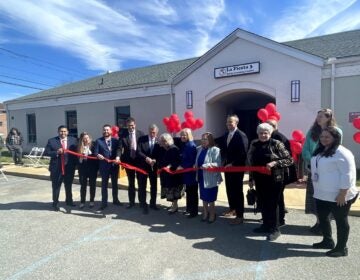At this Southern Delaware elementary school, infants and toddlers are encouraged to speak in their native Spanish
The six-week Léemelo program has seen success in a school where the majority of students speak Spanish.
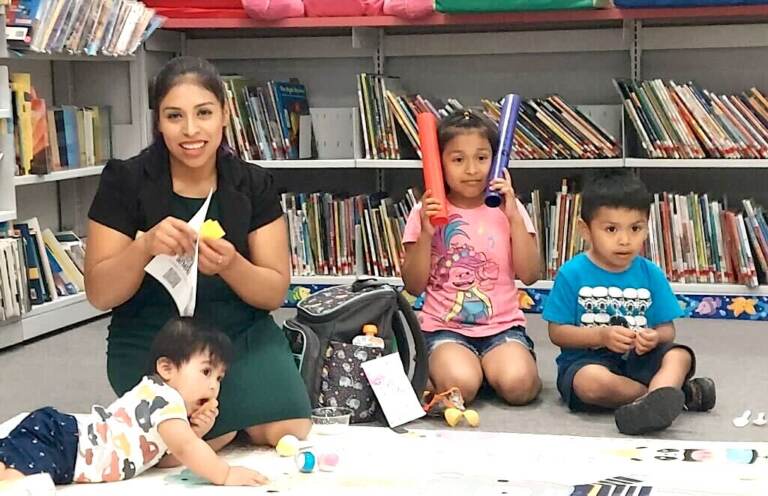
Georgetown resident, Magali Vicente-Ortega, interacting with her three children’s at the Léemelo program. (Courtesy of Jennifer Nein)
Being able to speak both Spanish and English is a valuable skill for students in southern Delaware, where more than 11% of households speak a language other than English, according to the U.S. Census.
Teachers at North Georgetown Elementary School are now encouraging students from Spanish-speaking homes to use their native language at a young age. They say it can set a stronger foundation when they enter pre-K.
To help in that effort, kids under 3 are using a program called “Léemelo,” which translates to “read it to me.” The Léemelo program was added after teachers saw success last year with older students who used a similar after-school program.
“The program we started last year was called ‘Leamos Juntos,’” said Jennifer Nein, the multilingual learner coordinator at NGE. “Leamos Juntos” translates to “let’s read together.”
“That’s the one where our school-age kids and their families come in and we read books with them. That one kind of pushes towards getting our kids to be bilingual and biliterate,” Nein said.
Nein knew the program had to stay due to the school’s distinctive student body, in which 538 of the 740 students speak Spanish. After seeing older students benefit from the program, school leaders noticed many families would bring young siblings along too.
“The more we thought about it, we were like, you know, we really need to start hitting these kids when they’re young,” she said.
Parents and kids in the Léemelo program meet every Wednesday at 4 p.m. throughout the six-week program, taking part in activities like singing, playing games, dancing, creating, and reading.
Parents say the hands-on program is necessary for child development.
“The program gives the parents an opportunity to find a place and a time to do this together with the kids,” said Abby Cortez, bilingual school community liaison at NGE. “There’s a craft that the parents work on for them to take home, and then the kids can use, for example, sensory bags since they’re toddlers and infants. Those sensory bags are really cool for them to use.”
Magali Vicente-Ortega of Guatemala, a Georgetown resident, participates in both programs because she has three children ages 7, 4, and 8 months. She sees the program as “fantástico y muy bonito” since she can finally learn something along with her children, while teaching them to be bilingual.
“Pues uno se presenta primero. Empezamos a leer, lo que uno ha entendido de los libros, si uno quiere compartir, lo comparten entre todos”, dijo Vicente-Ortega. “Uno canta, baila, lee con los bebés”.
“Well, you show up first. We start reading, what you’ve understood from the books, if you want to share, they share it with everyone,” said Vicente-Ortega. “You sing, dance, read with the babies.”
Vicente-Ortega sees this as a way to heal her inner child. She spoke about having to drop out of elementary school at an early age to help her family with responsibilities in Guatemala.
“Yo quisiera tener eso como mi infancia”, añadió ella. “Uno se divierte con la mentalidad de un niño de siete o ocho años”.
“I would have liked to have that as my childhood,” she added. “You have fun with the mentality of a seven- or eight-year-old.”
Both Leamos Juntos and Léemelo will continue this fall.

Get daily updates from WHYY News!
WHYY is your source for fact-based, in-depth journalism and information. As a nonprofit organization, we rely on financial support from readers like you. Please give today.



